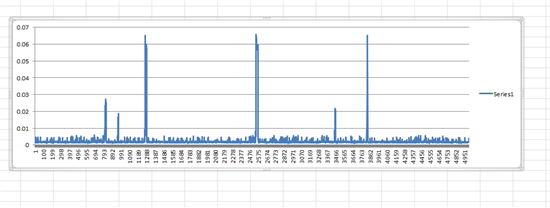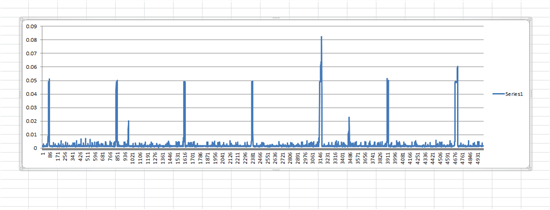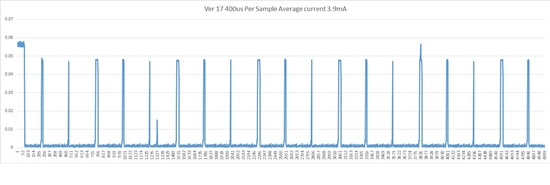im trying to use the SL_LONG_SLEEP_INTERVAL_POLICY power policy in sdk 1.0, firmware version 4.5
changing the values appears to change the interval between wakeup, but not giving the correct intervals.
setting 200 msec gives a 150 msec interval, but setting 300 msec gives 89 msec interval. see the attached power measurements with resolution of 120 usec. also, the current level is sometimes much higher than the spec
this is the code:
_u16 PolicyBuff[4] = {0,0,200,0}; // PolicyBuff[2] is max sleep time in mSec
sl_WlanPolicySet(SL_POLICY_PM , SL_LONG_SLEEP_INTERVAL_POLICY, (_u8*)PolicyBuff,sizeof(PolicyBuff));
200 msec setting:
300 msec setting:






